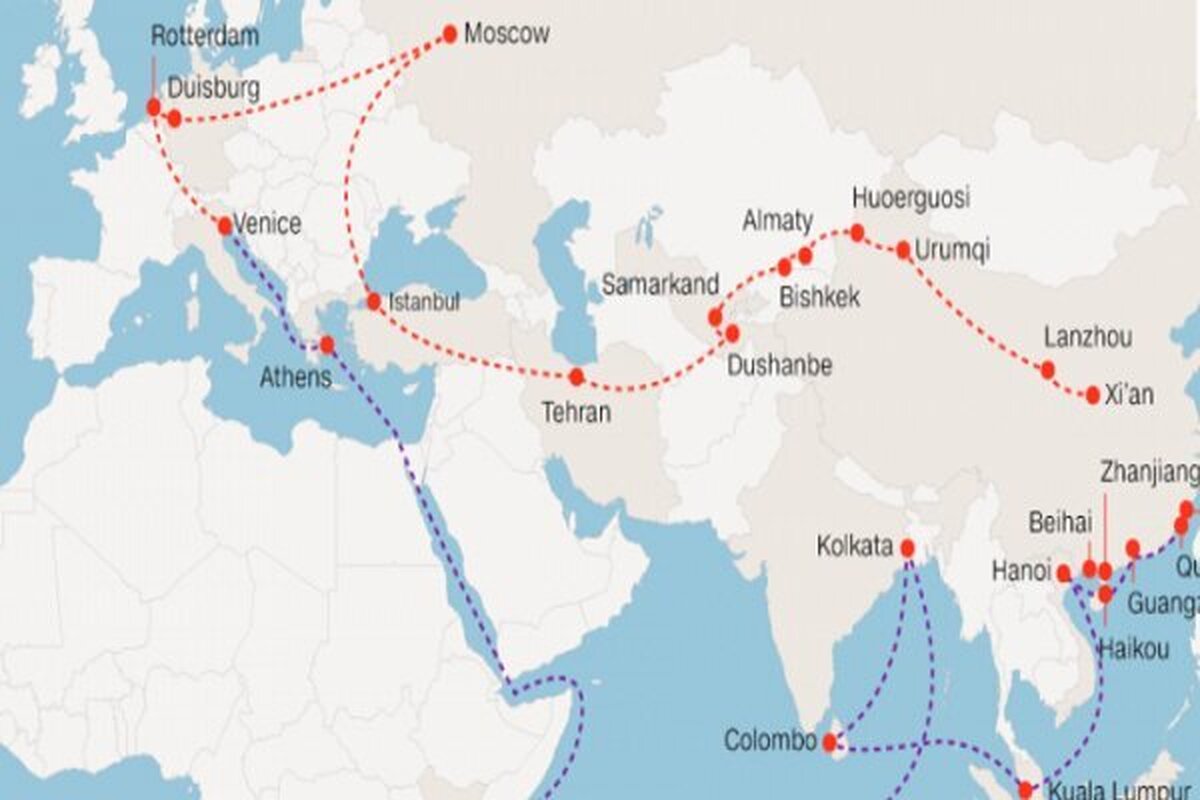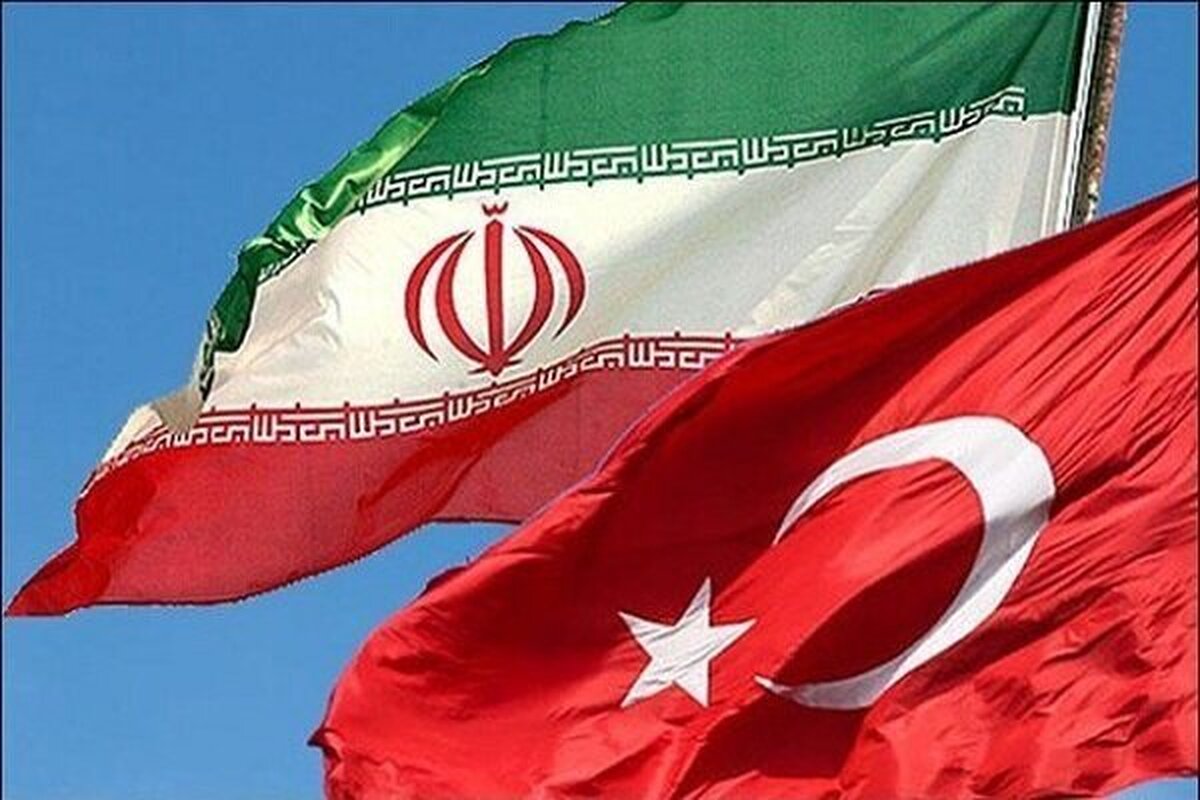
Iran-Afghanistan Rail Linkup to Bolster Transit, Trade Relations
EghtesadOnline: The railroad connecting Iran and Afghanistan was inaugurated by Iranian President Hassan Rouhani and his Afghan counterpart Ashraf Ghani on Thursday via videoconference.
“Today marks an unforgettable day in [the two nations’] history,” Rouhani said following the opening ceremony.
The Afghan president hailed the joint railroad as a “vital and historic” project.
“This project is a result of tireless efforts by both countries, despite all restrictions,” he was quoted as saying by Afghan business news portal Wadsam.
In his speech, Ashraf Ghani added that he had hoped to attend the inauguration in person, but due to Covid-19 restrictions, he was unable to do so.
Ghani said the railroad is an important project, not only for Afghanistan and Iran but also for the region and beyond.
“The opening of Khwaf-Herat railroad is a great step for the development and economic leap of Iran and Afghanistan,” Ghani was quoted as saying by Ariana News.
He said railroad transport is the most efficient, important and cheapest means of goods transportation in Asia.
Rouhani said through this rail link, Afghanistan will be connected to European countries.
“With the Herat-Khaf railroad, Afghanistan will be connected to European countries and later to Chabahar’s railroad,” he added.
Atta Nasib, the head of Afghanistan Investment Facilitation Unit, said this will help turn Afghanistan into a transit hub.
“This railroad between Afghanistan and Iran is a major economic and strategic achievement for both countries, which will connect us to European countries,” said Nasib.
‘Precious Gift From Iran’
The Afghan president called the railroad a "precious gift from Iran" that would help restore the Silk Road, an ancient trade route that spread prosperity across Asia.
The inauguration saw cargo trains depart from opposite ends of the line, AP reported.
According to Iran’s Roads and Urban Development Minister Mohammad Eslami, the 225-km-long railroad has been designed in four sections, three of which were previously inaugurated on Dec. 10.
“Sections one and two are 78 km long from Khaf County to Shamtigh border crossing in northeastern Khorasan Razavi Province in the Iranian territory and section three is 62 kilometers from the common border to Rozanak in Afghanistan. These three sections have been funded by Iran and constructed using Iranian expertise,” the official was quoted as saying by the news portal of the Roads Ministry.
Shamtigh border crossing was named an official border between the two countries for the transportation of commodities and passengers, during the Cabinet meeting on Oct. 12.
First Vice President Es’haq Jahangiri communicated the enactment to the ministries of roads and interior affairs the same day.
Eslami added that the 85-km-long Section 4, which has yet to be constructed, continues to Herat, the neighboring country’s third largest city, and Afghanistan has committed to construct it.
“The rail route between Iran and Afghanistan has been laid with the aim of increasing transit. Unified tariffs will be set in this and other transit points in the country,” Eslami was quoted as saying by ILNA.
“Preliminary negotiations have been made for Iranian experts to shoulder the construction of section four in the Afghan territory in exchange for Afghanistan’s mineral products. Moreover, negotiations are ongoing to continue the rail route to Mazar-i-Sharif which will then be linked to Uzbekistan, Tajikistan, Kyrgyzstan and China, completing a corridor connecting Iran to Central and East Asia.”
The Khaf-Herat project, said the minister, is part of Iran-Afghanistan rail corridor and can play a significant role in increasing Iran’s transit share in the region, from Russia to India and vice versa, in particular.
“The construction of the project began in the fiscal 2007-08 but was delayed due to security reasons in the region. Over the years, some 4 trillion rials [$15 million] worth of investments have gone into the project which is now worth a total of 15 trillion rials [$57 million],” Deputy Minister of Roads and Urban Development Kheirollah Khademi was quoted as saying by Iran Chamber of Commerce, Industries, Mines and Agriculture.
He told Iribnews.ir that the railroad will help Afghanistan’s development, complete and expand the rail network between the Economic Cooperation Organization member states, increase transits from Central Asia to India and restore Iran’s pivotal role as the link between the East and West.
When completed, he said, the railroad will be Afghanistan’s first railroad link to Iran, connecting the country to all of Iran’s southern ports in the Persian Gulf and the Sea of Oman.
A trial freight train delivered more than 400 tons of cement from Iran to Rozanak in Herat Province of Afghanistan on Dec. 2, ahead of the ceremonial inauguration of the newly-completed railroad.
A passenger train also carried Iranian railroad officials to and from a meeting with their Afghan counterparts
Regional Connectivity Project
The Afghanistan Railway Authority said the line forms one of its most important regional connectivity projects, as it will provide the landlocked country with a link to Iranian ports and to the rail networks of Iran, Turkey and Europe.
Freight traffic is predicted to be around 2 million tons a year, with imports to include oil, construction materials and food, and exports to include grain, dried fruit, plants and medical items.
AfRA said the operation of a passenger service is also being considered. Studies estimated that passenger traffic could reach 321,000 passengers/year, and freight traffic 6.8 million tons/year.
The new line is the first 1,435 mm gauge route in Afghanistan, matching the standard gauge networks in Iran and Turkey. The 75-km Uzbekistan–Mazar-i-Sharif line and the two short cross-border lines from Turkmenistan to Afghanistan are 1,520 mm gauge, Railway Gazette reported.
“The annual transit to Afghanistan from the Commonwealth of Independent States and Turkey amounting to 1.2 million tons and 500,000 tons respectively can be redirected to Khaf-Herat railroad,” the head of the Islamic Republic of Iran Railways, Saeed Rasouli, was quoted as saying by the news portal of the Ministry of Roads and Urban Development.
The official added that the Iranian government hopes the railroad will further increase social, economic and cultural ties between the two nations.
“We are counting on the Khaf-Herat rail route to play a significant role in boosting interactions between Iran and Afghanistan.”
Expansion of Trade Relations
Iran’s exports to Afghanistan are projected to reach $2.7 billion by March next year.
Referring to the economic significance of the project, officials of Herat Chamber of Commerce and Industries have said that the implementation of the project will help expand exports and imports between Iran and Afghanistan.
“Khaf railroad project will help connect Herat to the entire world and develop our export ability,” said Abdul Latif Qanawizyan, the deputy head of Herat Chamber of Commerce and Industries.
Iranian officials have said the project will also help Afghanistan to get easy access to Iranian ports at Chabahar and Bandar Abbas.
Iran accounts for around half of Afghanistan's market, according to Iran’s commercial attaché to the neighboring country, Mohammad Mehdi Javanmard-Qassab.
Between $3-4 billion of Afghanistan’s annual imports of $6-7 billion are from Iran. Afghanistan has huge capacity and demand in the field of technical and engineering services. This provides us with ample opportunity for exports of these services and transfer of our technical know-how in different fields to Afghan businesses,” Javanmard-Qassab was quoted as saying by Fars News Agency.
The first edition of Iran’s Technical and Engineering Services in Water, Electricity and Energy Sectors Exhibition was held in Kabul alongside the first edition of Urban Services, Transportation, Traffic and Related Machinery Exhibition from Sept. 22-24.
“Iran dispatched its biggest trade delegation over the past 25 years to Afghanistan to attend this exhibition for negotiating Iran’s capabilities and Afghanistan’s market capacities.”
Twenty-one Iranian companies in the urban services sector and 54 companies in the technical and engineering services sector were present at the exhibitions, Iranian Embassy in the Afghan capital said in an announcement.
Javanmard-Qassab noted that though Iran aims to increase exports to Afghanistan, there are many infrastructural handicaps in the way.
“Facilities in the common border checkpoints are not sufficient to accommodate higher trade volumes. This needs to be addressed by officials from the two sides … Congenial relations have brought about strong ties between Iranian and Afghan merchants and businesspeople. Therefore, a boost in trade is not far-fetched, if the proper infrastructure is prepared,” he added.
All Border Gates Open for Trade
There are three main border gates between Iran and Afghanistan, which are presently all open for trade between the two sides.
Milak in southeastern Sistan-Baluchestan Province is the main trade corridor between the two countries.
The opening hours of Milak was extended on Sept. 16 for 10 days from 7:00 p.m. to 10:00 p.m. to speed up the flow of commercial traffic on Iran’s side of the border, ILNA reported.
The agreement was reached after a videoconference between Iranian and Afghan heads of customs administrations and an in-person meeting between the local officials of Sistan-Baluchestan and Afghanistan’s Nimruz Province.
Wheat, sugar, fabrics, food, dairy products and vegetables are the main items exported by Iran to Afghanistan via Milak border crossing.
Besides Milak, Iran and Afghanistan have two other border crossings for trade, namely Dogharoun in Khorasan Razavi Province’s border city of Taybad, in addition to Mahiroud in South Khorasan Province.
About $1.16 billion worth of goods were exported to Afghanistan through Dogharoun Special Economic Zone during the first half of the current Iranian year (started March 20).
“The value of exported goods has risen by 33% compared with the same period of last year,” the head of Dogharoon Special Economic Zone told IRNA.
Mohammad Rostami added that Afghanistan exported $2.57 million worth of goods to Iran during the same period.
He added that 50% of Iranian exports to Afghanistan through Dogharoun go to Herat, which is the second biggest market in the country.
“The 30-million-strong market of Afghanistan welcomes Iranian goods,” he said, adding that construction materials, fresh and dried fruits, and food are among the most popular goods in Afghanistan and construction stones, oilseeds and used batteries are among the main goods exported to Iran from Afghanistan.
Dogharoun border customs office is 100 years old. The border crossing also sees transit of goods that originate from Pakistan, Persian Gulf states countries and India.




